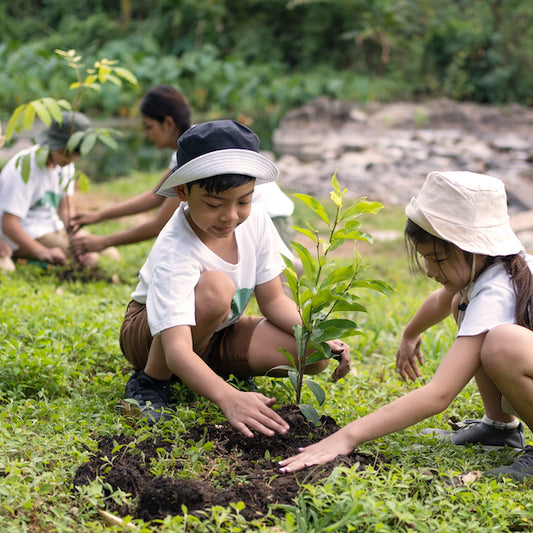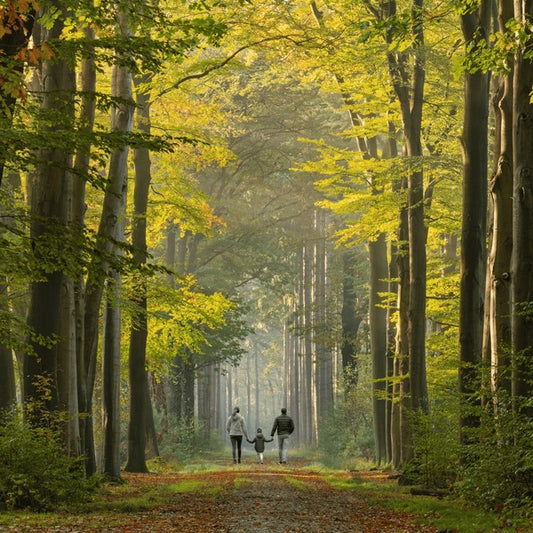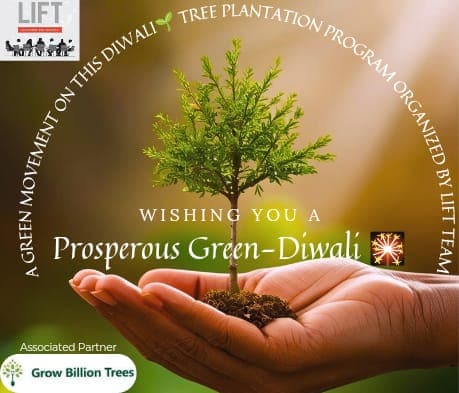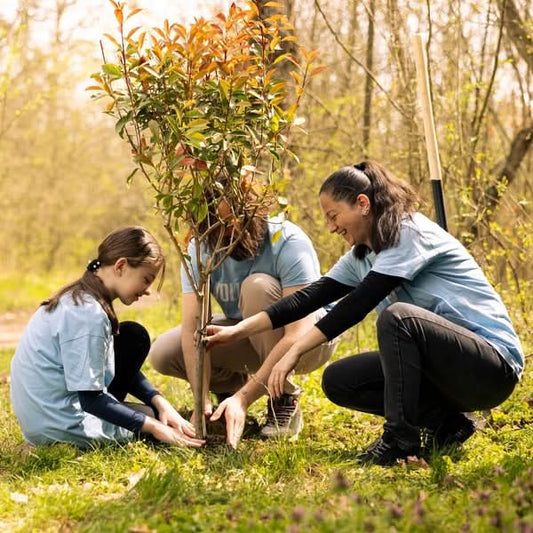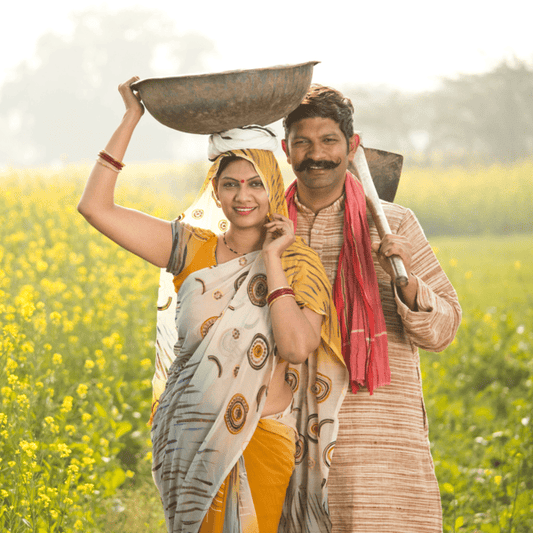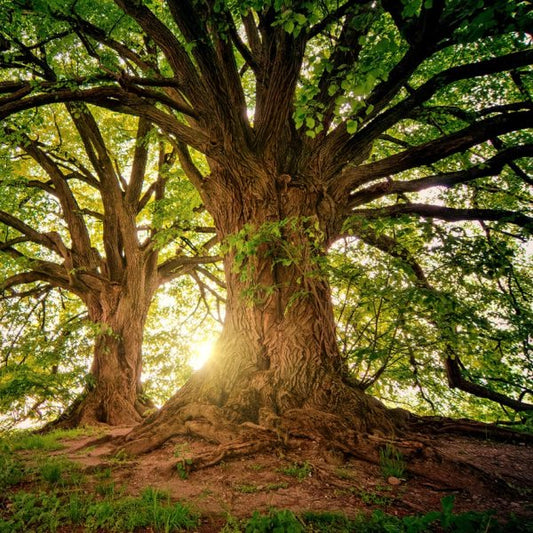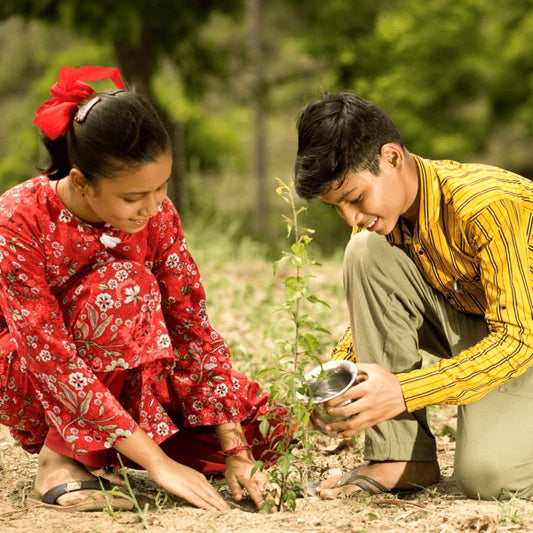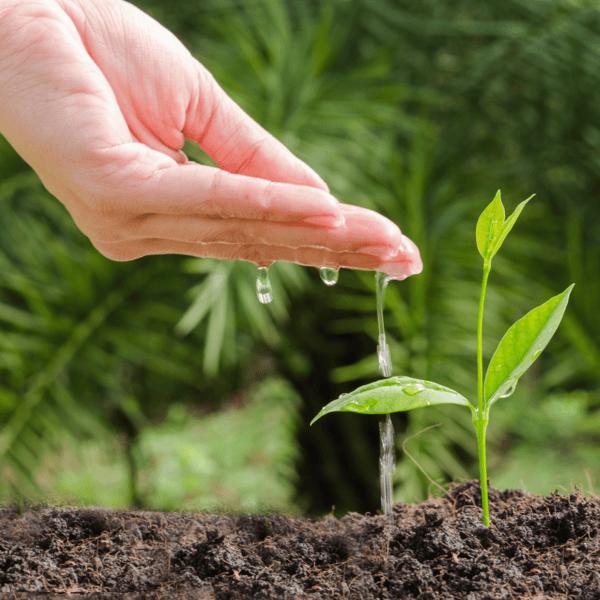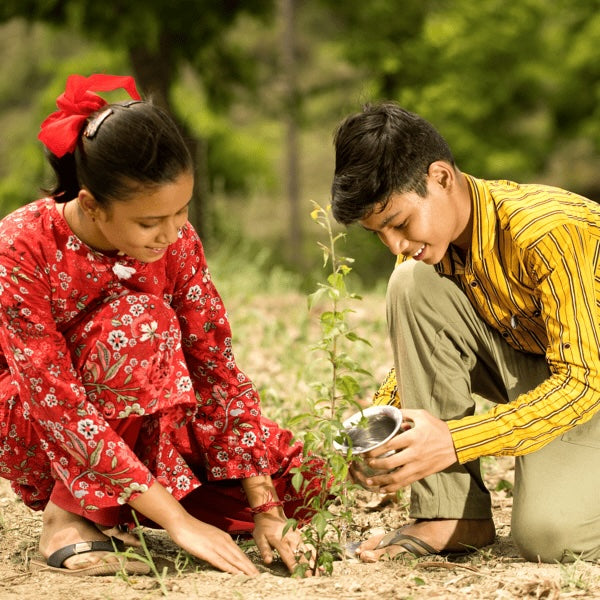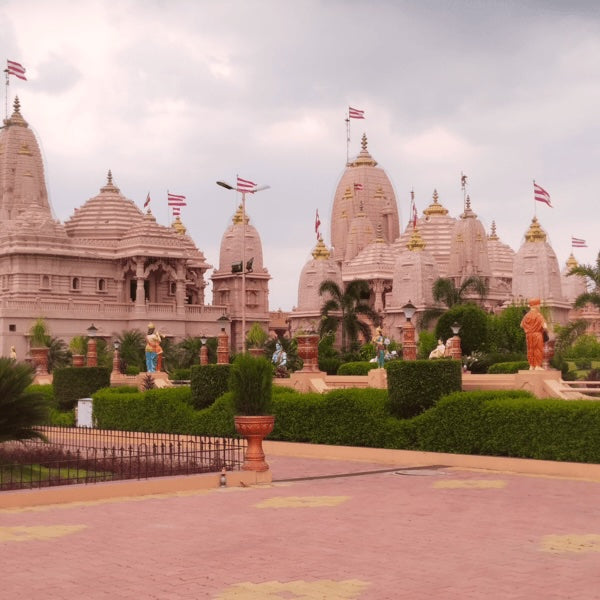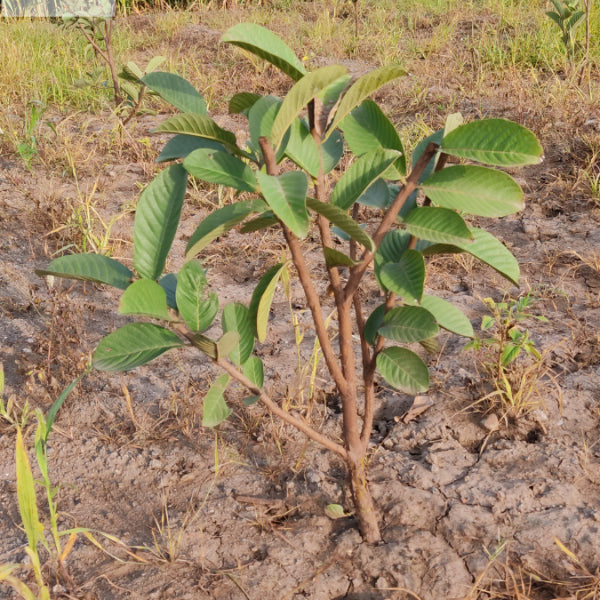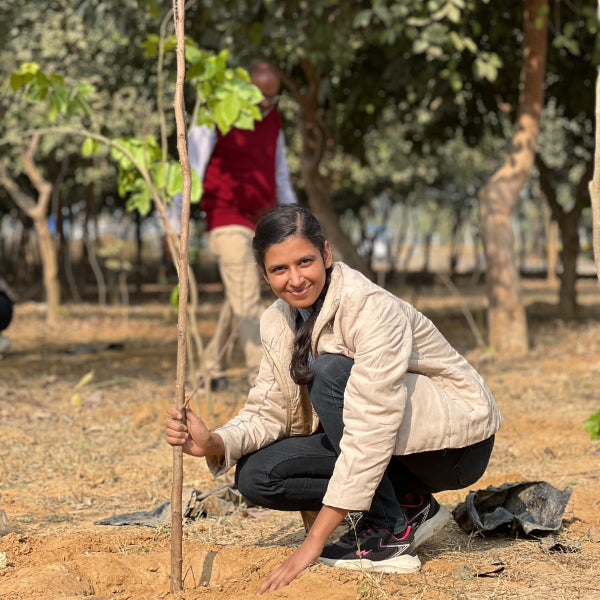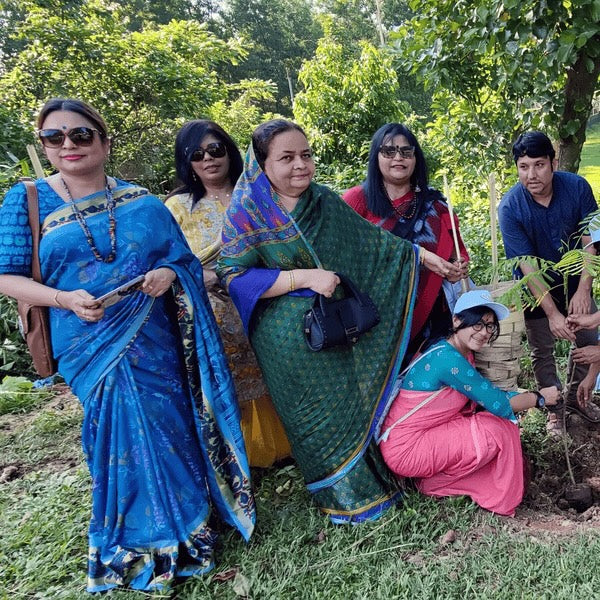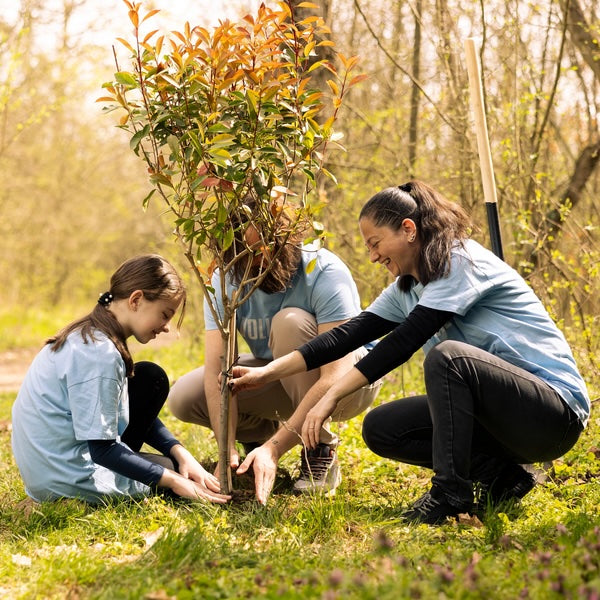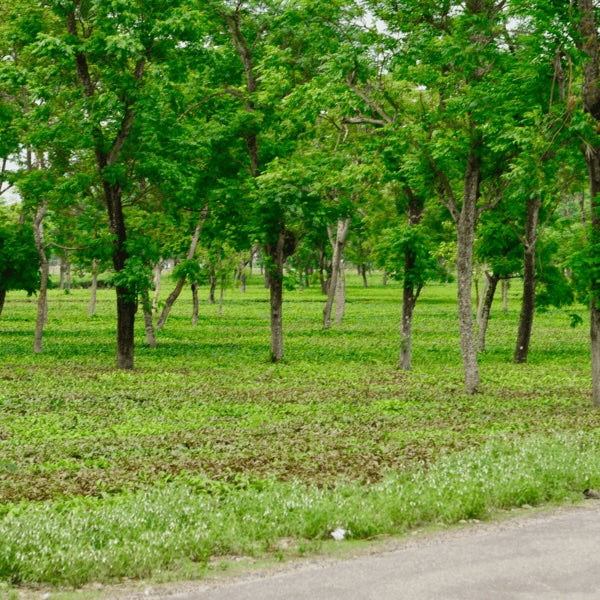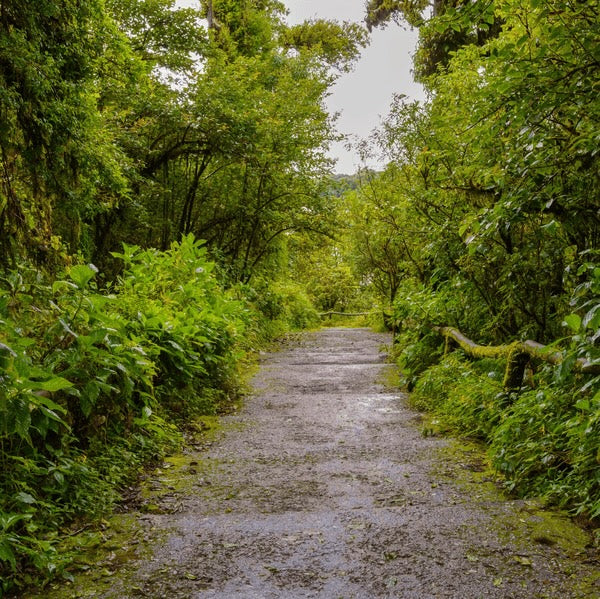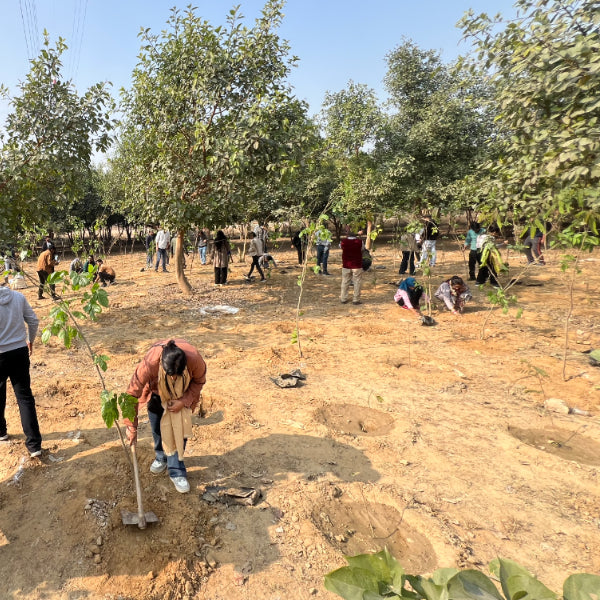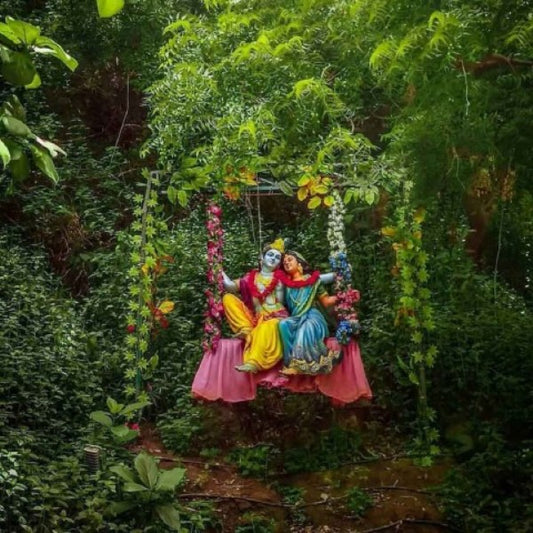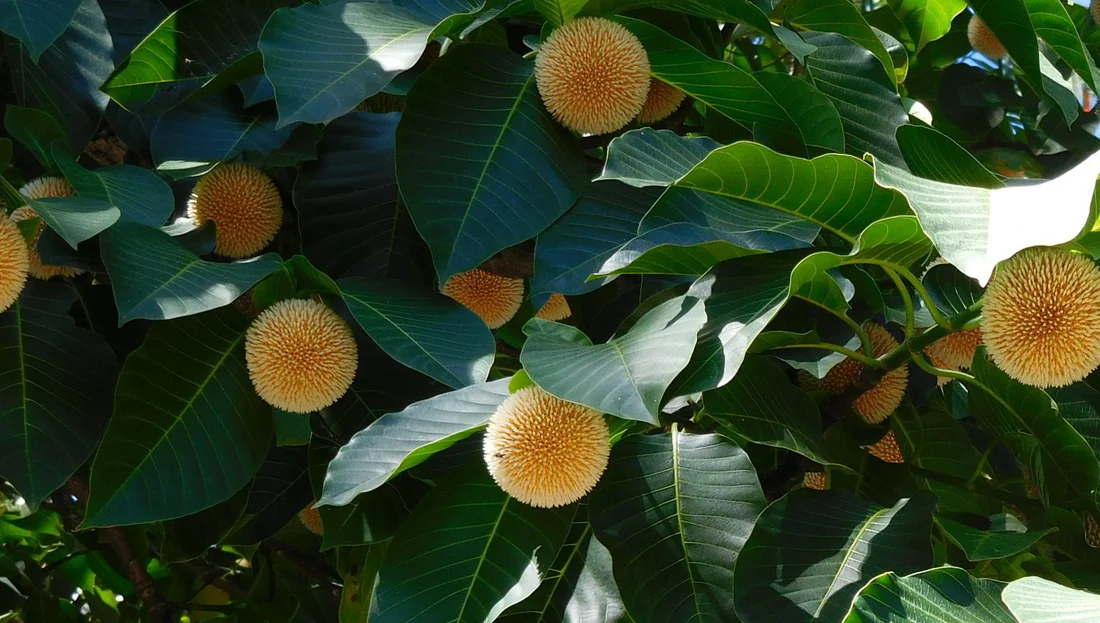

The Kadamba tree (Anthocephalus cadamba) is more than a tropical beauty—it’s a divine symbol rooted in mythology and worship. Sacred to Lord Krishna and revered in southern Shakti traditions, this tree continues to bloom in the hearts of pilgrims and Read more
Trending
Trees for Corporates
Kadamba Tree: Krishna’s Beloved Tree of Romance and Rain
The Kadamba tree (Anthocephalus cadamba) is more than a tropical beauty—it’s a divine symbol rooted in mythology and worship. Sacred to Lord Krishna and revered in southern Shakti traditions, this tree continues to bloom in the hearts of pilgrims and nature lovers alike. Let’s explore how the Kadamba tree connects spiritual tales with real-world travel. 🌳
1. Krishna’s Tree of Romance and Play 🕊️
In Hindu mythology, the Kadamba tree is intimately linked to Lord Krishna’s divine childhood. Tales from Vrindavan describe Krishna’s leelas—especially the playful incident where he hid the garments of bathing Gopis—under the Kadamba’s shade near the Yamuna River. This sacred grove, Kadamba Kanan, remains a pilgrimage site today.
Why Tourists Visit: Devotees and spiritual seekers travel to Vrindavan to connect with Krishna's stories, meditate beneath the sacred trees, and witness the living relics of mythology.
How to Visit: Vrindavan is accessible via road and rail from Mathura (15 km). Visitors often take guided spiritual tours that include temple visits, river rituals, and a walk through the Kadamba groves in Seva Kunj and Nidhivan. Local guides narrate Krishna's stories beneath the trees, making it a devotional storytelling experience.
2. A Divine Connection with Goddess Durga 🌼
In the southern parts of India, the Kadamba tree is associated with Goddess Durga and victory in battle. In Banashankari (Karnataka) and Kanchipuram (Tamil Nadu), the tree is worshipped during festivals and serves as a backdrop to sacred rituals.
Why Tourists Visit: Pilgrims visit these temple towns to witness powerful rituals performed near the tree. Kadamba groves here are said to bless devotees with courage and protection from evil.
How to Visit: These towns are connected by road and local transport. Travelers typically plan temple trails, visiting during Navratri or annual jataras when the tree is ceremonially worshipped. Eco-spiritual tours are also gaining popularity in Tamil Nadu.
3. The Royal Tree of the Kadamba Dynasty 📜
The Kadamba tree is the emblem of the Kadamba dynasty, which ruled parts of Karnataka in the 4th–6th centuries. According to legend, the dynasty’s founder received divine inspiration under a Kadamba tree.
Why Tourists Visit: History buffs and heritage travelers visit Banavasi to explore ancient temples, ruins, and groves that echo royal and mythological tales.
How to Visit: Banavasi is reachable from Sirsi or Hubli. Visitors often explore the archaeological sites, Kadamba-era temples, and lush groves with local guides sharing folklore tied to the ruling dynasty.
4. Witness Blooming Myth at Kadamba Utsavs 🌸
During monsoon, Kadamba flowers bloom with golden orbs, filling the air with fragrance. In Karnataka, the Kadambotsava celebrates this bloom with classical music, dance, and eco-awareness.
Why Tourists Visit: Nature lovers, photographers, and culture seekers attend to experience the blooming spectacle, local folk performances, and tree worship ceremonies.
How to Visit: Held in Uttara Kannada, the festival is promoted by local tourism boards. Accommodations are available nearby, and event schedules are published annually. Walking trails are set up under blooming Kadamba trees for immersive experiences.
Conclusion: The Tree That Connects Heaven and Earth 🌏
The Kadamba tree isn’t just admired for its beauty—it is lived and loved as a sacred being. From Krishna’s mischief to Durga’s power and the royal Kadambas’ legacy, this tree invites us to walk paths of history, devotion, and ecological reverence. Whether you're a pilgrim, a traveler, or a nature lover, a visit to one of India’s many Kadamba groves may just leave your soul blooming. 💚
You may also like
Corporate Plantations
Kadamba Flower Benefits
The Kadamba flower isn't just a pretty face—it’s basically nature’s spa treatment. Packed with antibacterial and healing properties, it’s used in traditional remedies for skin, headaches, and even that sneaky insomnia. While Krishna may have used it to charm gopis, today it’s your Ayurvedic go-to. Talk about blooming benefits! If wellness trends had a leafy mascot, Kadamba would totally be crowned queen. So next time someone says “stop and smell the roses,” hand them a Kadamba flower instead.
Kadamba Tree in Mythology
divine love stories, epic rain dances, and spiritual awakenings. Forget Netflix, these branches have binge-worthy tales built-in.
Kadamba Tree Uses
If trees had resumes, Kadamba would top the list—shade provider, rainmaker, medicine cabinet, and romantic backdrop all in one. Its wood is light and easy to work with, great for paper and furniture. The bark and leaves? Full of medicinal vibes. And let’s not forget—it’s the monsoon season’s fashion icon with its golden ball-shaped blossoms. Basically, Kadamba’s out here doing the most, and looking good while at it.
Krishna and Kadamba Tree
Picture this—flute in hand, peacock feather on his crown, Krishna leans casually against the Kadamba tree, turning the forest into a romance novel. This tree wasn’t just a background prop—it was the setting for divine love stories. It’s where Ras Leela happened, where magic met monsoon. So yes, while others talk about love under cherry blossoms, we’ve got Krishna, a Kadamba tree, and a whole vibe. Iconic.
Kadamba Tree and Monsoon
“Hey, grab your chai—it's pouring time!” Its fragrant flowers soak up the drizzle, filling the air with a sweet, earthy perfume. Farmers love it, poets romanticize it, and rain-dancers swear by it. So yeah, the Kadamba doesn’t just survive the monsoon—it stars in it.
Sacred Trees of India
Among India’s spiritual flora, Kadamba stands tall—literally and metaphorically. It’s not just a tree, it’s a temple in disguise. With ties to Krishna and Durga, it’s revered during festivals and planted with rituals. Think of it as the VIP section in the sacred tree club, rubbing roots with banyan, peepal, and neem. And unlike boring botany class, this is where culture, divinity, and biodiversity party together.
Kadamba Tree Plantation
butterflies and birds love it, so you basically get a free nature show. Planting Kadamba isn’t just a good deed—it’s a poetic one. CSR teams, are you taking notes?
Kadamba Tree and Wildlife
Kadamba’s basically the green Airbnb for birds, bees, and butterflies. Its flowers are nectar hubs, and its branches are perfect hangout spots for avian guests. Even deer love munching on its leaves. It's a biodiversity magnet dressed as a tree—eco-influencer status, unlocked. So if you’re planting for wildlife, Kadamba’s your leafy MVP.
Kadamba Tree in Ayurveda
Ayurveda sees Kadamba like a multi-tasking grandma—wise, healing, and always ready with a home remedy. From fever to skin issues, its bark, flowers, and roots are herbal heroes. Grounded in centuries-old practice, Kadamba’s still trending in wellness circles—kind of like turmeric, but with more drama and a divine backstory. You’ll want this tree in your immunity squad.
Kadamba Tree in Art and Culture
Artists through the ages have lowkey obsessed over the Kadamba tree. Whether it’s in temple carvings, miniature paintings, or folklore songs, this tree’s been the muse behind many masterpieces. It’s not just a tree—it’s a symbol of love, fertility, and poetic feels. Kadamba in a canvas? Pure vintage vibe meets divine inspiration.
Difference Between Kadamba and Bakul Tree
Kadamba and Bakul may both be desi bloomers, but don’t mix them up—Kadamba’s your monsoon diva with ball-shaped flowers, while Bakul’s the subtle beauty with fragrant, starry blooms. Kadamba is bold, seasonal, and dramatic; Bakul is evergreen and elegant. It’s like comparing Bollywood masala to indie art cinema—both iconic, just different genres.
Kadamba Tree in Tourism
Tree tourism is a thing—and Kadamba is on the map! Visit ancient temples, Krishna trails, or eco parks, and you’ll spot this majestic beauty standing proud. It’s not just a tree, it’s a photo op, a storyteller, and a fragrant souvenir from nature. Want a soulful, scenic travel plan? Follow the Kadamba trail and watch history bloom.
FAQ
What is the significance of the Kadamba tree in Hindu mythology?
The Kadamba tree, adored by Lord Krishna, symbolizes romance and devotion. It’s believed that Krishna would often rest under its fragrant blossoms, serenading Radha. In Hindu culture, this tree is seen as a divine gift, representing love and the sacred bond between the divine and the mortal.
Why is the Kadamba tree associated with Lord Krishna?
The Kadamba tree is famously tied to Krishna’s romance with Radha. It’s said that the tree’s sweet-smelling flowers captivated Krishna, making it his favorite resting spot during his divine exploits in the Vrindavan forests. Krishna's connection to the Kadamba tree enhances its mystical and romantic appeal.
Where can I find the Kadamba tree?
The Kadamba tree thrives in India, particularly in the tropical and subtropical regions. It’s often found in forests, gardens, and near temples dedicated to Lord Krishna, like Vrindavan. If you’re on a quest for romance (or just lovely trees), these fragrant blooms are where the magic happens.
What is the Kadamba tree's role in monsoon mythology?
The Kadamba tree is intimately linked with the monsoon season. According to legend, it blooms during the rains, symbolizing the arrival of romance and divine love. The fragrant flowers are believed to attract rain, making it a symbol of the joyous, life-giving showers of the monsoon.
How does the Kadamba tree benefit the environment?
The Kadamba tree is not just about romance; it’s also an eco-friendly hero. Its dense canopy provides shade, reduces soil erosion, and supports biodiversity by offering a habitat for birds and insects. With its lush green leaves and fragrant flowers, it plays a vital role in maintaining ecological balance.
Why are Kadamba flowers so fragrant?
The Kadamba flowers are known for their enchanting fragrance, which adds to their romantic allure. Their scent is often described as sweet, intoxicating, and irresistible. It’s no surprise that these flowers are a favorite of Lord Krishna, who would revel in their aroma while serenading his beloved Radha.
What makes the Kadamba tree special during festivals?
During festivals like Janmashtami, dedicated to Lord Krishna, the Kadamba tree takes center stage. Devotees adorn it with flowers, making it a symbolic centerpiece in Krishna worship. The sweet fragrance of Kadamba blossoms fills the air, adding a divine touch to the festive celebrations and creating an atmosphere of love and devotion.
What is the symbolic meaning of the Kadamba tree in love?
The Kadamba tree represents love, romance, and passion, echoing the tender connection between Krishna and Radha. Its blossoms, which bloom in vibrant clusters, are believed to symbolize the blossoming of love. For lovers, this tree is a metaphor for eternal love, devotion, and the joy that comes with affection.
Why is the Kadamba tree important in spiritual practices?
In spiritual circles, the Kadamba tree is revered for its association with Lord Krishna, the epitome of divine love. Meditation or prayer under this tree is believed to bring spiritual peace and inner harmony. Its divine connection to Krishna’s earthly life makes it a spiritual symbol of devotion and enlightenment.
How does the Kadamba tree help with mental wellness?
Kadamba’s fragrant flowers are known for their calming effect, promoting mental wellness. The soothing aroma helps reduce stress and anxiety, offering an immediate sense of tranquility. Legend suggests that the divine fragrance of Kadamba can also help devotees find clarity and spiritual peace in their lives.
Can I plant a Kadamba tree in my garden?
Yes, the Kadamba tree is an ideal choice for gardens that want to add a touch of romance and spirituality. With its fast-growing nature and fragrant blossoms, it’s a great addition to any landscape. Just make sure to plant it in a sunny, well-drained spot, and watch your garden bloom with divine love.
What are the medicinal uses of the Kadamba tree?
Beyond its spiritual significance, the Kadamba tree offers medicinal benefits too. The bark, leaves, and flowers have been traditionally used to treat a variety of ailments, from fever to digestive issues. Its healing properties add an extra layer of reverence to this tree, making it both a sacred and useful plant.
Most Popular
Connect with us
-
👥 Corporates
If you are looking for:
- 🌲 Tree Plantation Events
- 📊 CSR Projects
📧 corporate@growbilliontrees.com
📞 +91 9699723523
💬 +91 9325931304 WhatsApp (Only)
🕒 Mon - Sat | 10am - 7pm IST
-
🧩 Tree Plantation NGOs
If you are looking for:
- 💰 Financial Assistance
- 🤝 Operational Support
📧 support@growbilliontrees.com
📞 +91 9699723523
💬 +91 9325931304 WhatsApp (Only)
🕒 Mon - Sat | 10am - 7pm IST
-
🌼 Individuals
If you are looking for:
- 👥 Group Tree Plantation Drive
- 🌳 Bulk Tree Plantation
📞 +91 9699723523
💬 +91 9325931304 WhatsApp (Only)
🕒 Mon - Sat | 10am - 7pm IST

